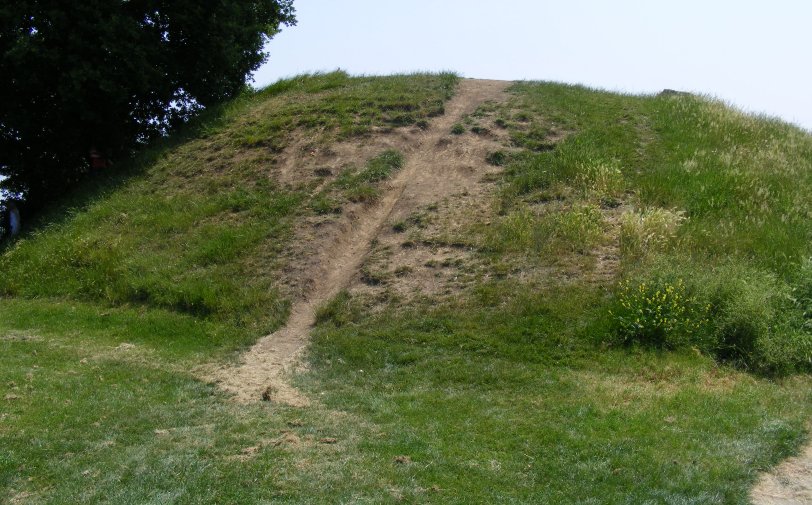Raleigh

The Domesday Book of 1086 states
under the entry for Rayleigh ‘in this manor Swein built his
castle'. This Swein was undoubtedly the son of Robert Fitz
Wymarch of Clavering
and presumably he built the castle after the death of his father
between 1070 and 1075. It is thought to have been occupied
from the reign of William
I (1066-87), if not a little earlier until the mid fourteenth
century. Excavation suggests intensive occupation before the
mid twelfth century, which presumably coincides with the fall of Henry
Essex of Claveringfrom
favour in 1163. Despite this the barony, under royal control,
remained intact and was recorded as such by King John in
1212. In 1181 King Henry II ordered William Bishop and
Ranulf to take custody of the king's houses in the castle.
Presumably the fortress had been in his hands since 1163.
After King John there followed periods of intermittent
development, and then more intensive occupation in the
late thirteenth and early fourteenth centuries. By 1394 the site
had been abandoned when King Richard II allowed the locals to repair
their chapel and build a belfry with stones taken from the castle ruins.
Description
Rayleigh castle stands on high ground with good views all
around. It is a normal motte and bailey castle, but quite
different to the presumably older Essex family site at Clavering which is just a
bailey. Rayleigh motte summit stands some 20' above the
bailey surface, but some 55' above the ditch bottom to the
west. The mound has a surface diameter of some 75' and basal
diameter of 220'. The inner bailey is some 260' north to
south by 150' wide. The northern end is rectangular, but the
southern end curves from the east round to a causeway up the
motte. There was an outer bailey containing a windmill to the
east, but this has been built over. The ditches may have been
wet and now contain a pond to the south.
Excavations uncovered large amounts of stone and rubble within the
bailey and on the north-east slope of the motte. This
strongly suggests that site was fortified in stone.
Copyright©2021
Paul Martin Remfry

